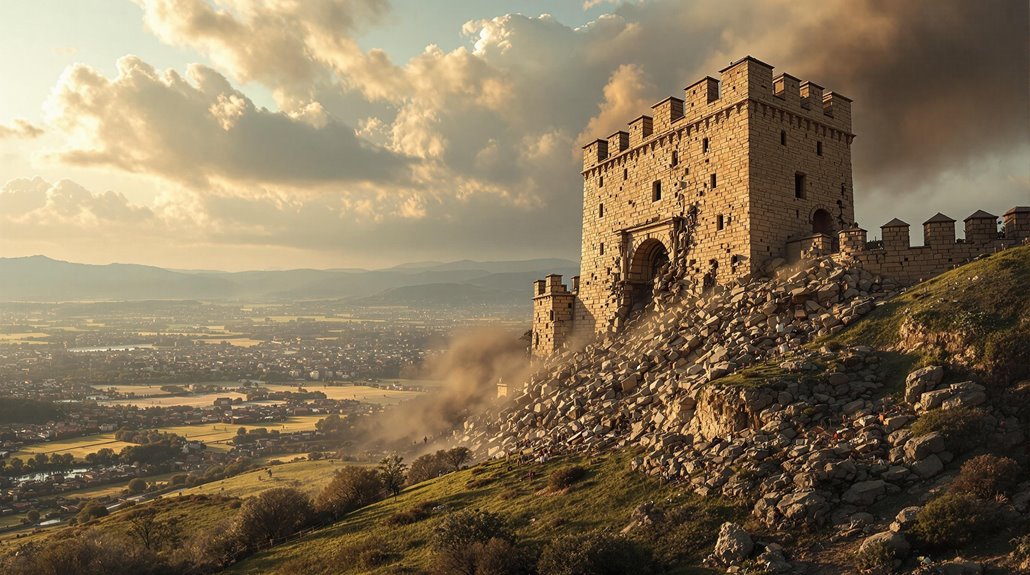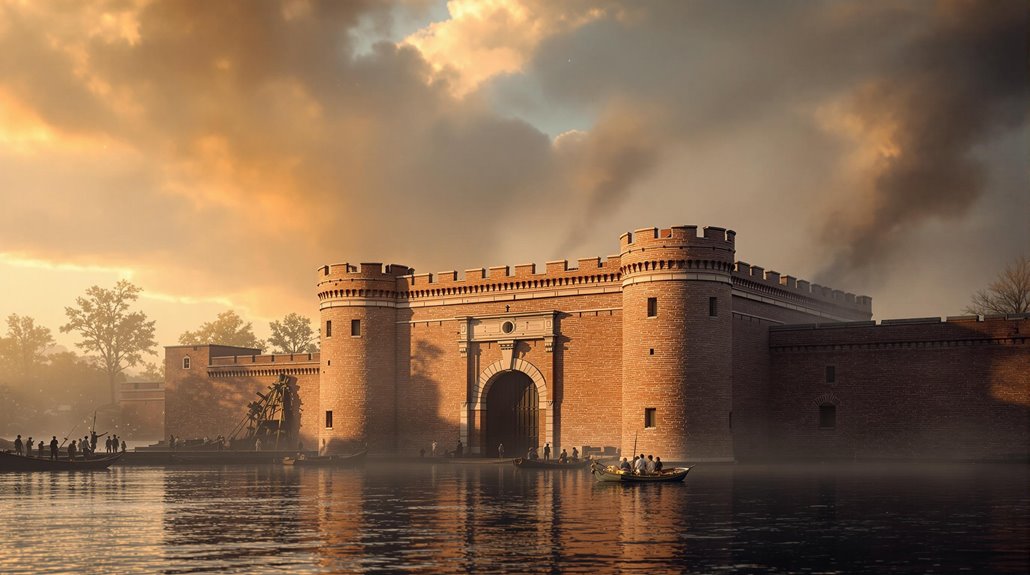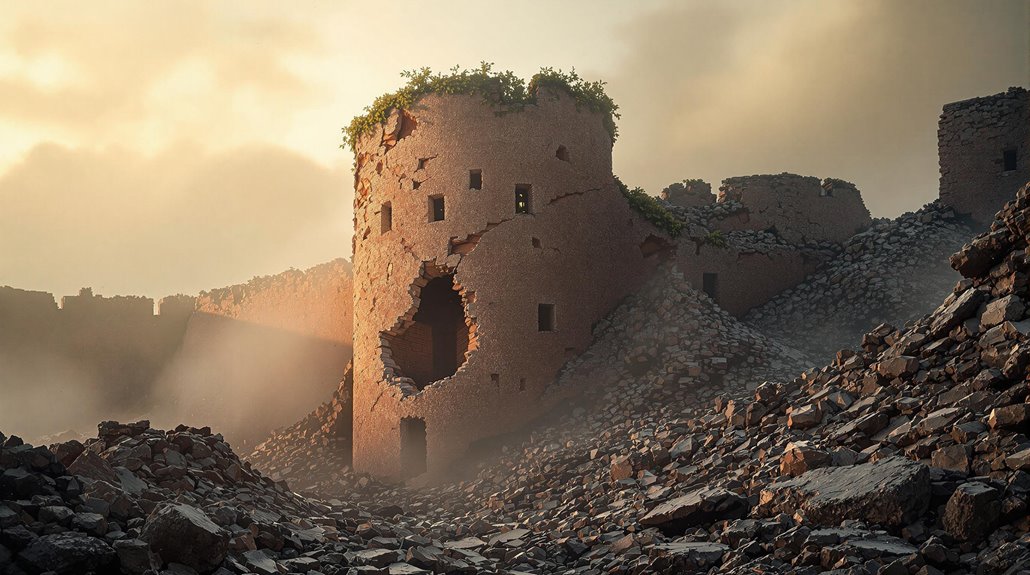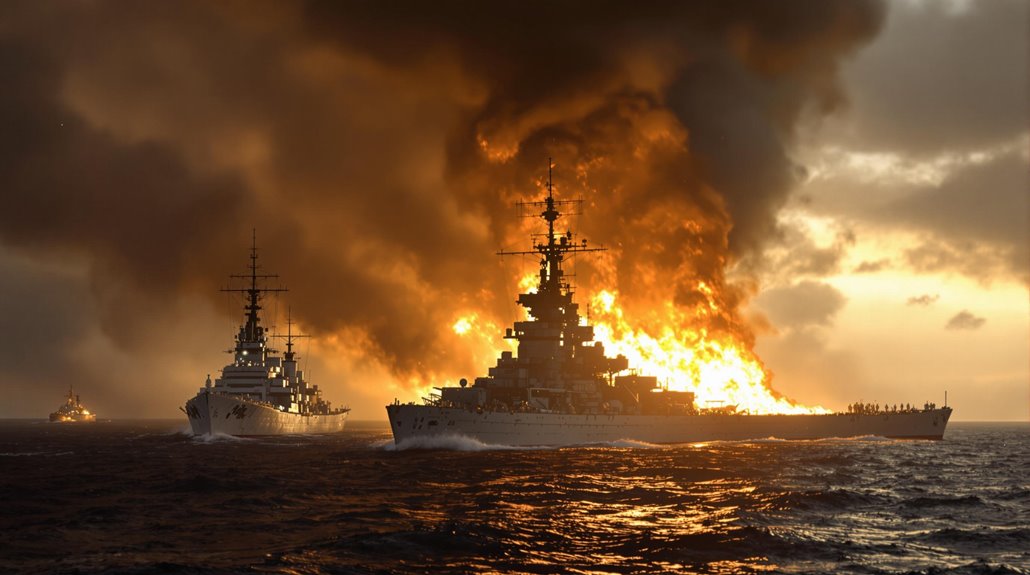20 Minutes to Fall: How the ‘Unbeatable’ Fortress Collapsed
You've probably never considered how twenty minutes could erase decades of engineering confidence. When the Baltimore fortress's power grid flickered at 14:23, it triggered more than just a blackout – it exposed a cascade of fatal flaws that engineers had overlooked for years. While the public saw an impenetrable icon of strength, critical weaknesses lurked beneath its steel facade. The disaster's lightning-fast progression raises unsettling questions about other structures we've deemed indestructible.
The Crucial Timeline: From Power Loss to Catastrophe

Darkness descended upon the fortress at 14:23 when the main power grid failed catastrophically.
You'd never imagine how quickly things unraveled after that initial power fluctuations sparked a chain reaction. Within minutes, backup systems failed, communications went dark, and your last line of defense – the automated protocols – shut down completely.
The structural integrity of this supposedly impregnable fortress deteriorated at an alarming pace. First, the walls began to give way, then the eastern battlements crumbled like sandcastles. Just like Hurst Castle's Victorian section, the deterioration was accelerated by relentless coastal erosion. The British defenders watched helplessly as their coastal artillery defenses proved utterly inadequate against the Japanese tactics.
You couldn't stop the underground tunnels from flooding, and the central keep started swaying ominously. By the two-hour mark, you'd lost nearly everything – communications, defenses, and stability.
At 16:53, the fortress that had stood for generations succumbed to total collapse.
Racing Against Time: The Evacuation Effort
When chaos erupted during the fortress's final hours, you faced an unprecedented evacuation challenge that would test every emergency protocol.
Your evacuation strategies quickly revealed fatal flaws: only 20 lifeboats for over 2,000 souls, and crews barely trained to operate them.
You'd discover how social class determined survival chances. While first-class passengers gained priority access to lifeboats, third-class passengers struggled against physical barriers to reach the boat deck. The need for constructive criticism from safety experts had been ignored during the fortress's construction.
The "women and children first" policy, though well-intentioned, suffered from poor execution. Many passengers, unaware of the looming danger, hesitated to board the lifeboats. Captain Smith's decision to cancel the scheduled lifeboat drill earlier that day would prove catastrophic.
Your shortage of trained seamen meant even available lifeboats launched under capacity.
When Steel Met Water: The Collision's Anatomy
As steel yielded to the immense hydraulic forces that fateful night, you'd witness how engineering principles couldn't overcome the raw power of nature.
The collision dynamics between water and steel created devastating impulsive forces, instantly changing the structure's velocity and momentum.
You'd notice how the water's depth and reservoir dimensions amplified the lateral forces, hammering against the walls with varying frequencies.
The d/L ratios reached critical levels of 0.144, maximizing the resultant force on the weakened structure.
Operating at 1,900 psi pressure, the system's intense forces contributed to the catastrophic failure.
Years of corrosion and microbial activity had already compromised the steel's structural integrity, with sulfate-reducing bacteria silently degrading the foundation.
The formation of bacterial tubercles on the steel surface created vulnerable spots that accelerated the deterioration process.
While protective coatings might've delayed this outcome, the sudden forceful contact between water and vulnerable steel created an unstoppable chain reaction of structural failure.
Heroes in the Dark: First Responders' Battle
Through the chaos of twisted metal and churning waters, first responders launched an immediate coordinated assault against time and tide.
You'd have witnessed heroic sacrifices as dive teams plunged into the frigid waters, while Light Technical Rescue Teams deployed their specialized skills for difficult extractions.
The mayday call from the powerless vessel provided crucial warning time for emergency teams to mobilize.
Emergency coordination proved essential as a Unified Command structure quickly took shape.
You'd see the Coast Guard, Army Corps of Engineers, and state agencies working in seamless synergy.
The responding Engine Companies arrived equipped with 750 gallons of water and necessary supply hoses, though their primary firefighting capabilities weren't needed in this water rescue scenario.
Within two hours, the Rapid Relief Team arrived, providing over 1,400 meals to sustain the responders from 16 different agencies.
Despite their valiant efforts, the reality was grim.
While they successfully rescued two people from the waters, six construction workers who'd been repairing potholes remained missing, presumed to have made the ultimate sacrifice.
The Ripple Effect: Baltimore's Economic Wounds

Despite Baltimore's remarkable economic trajectory, the fortress collapse has released a devastating ripple effect across the region's economic landscape.
 22% tech growth rate annually offers a glimmer of hope for economic diversification during this crisis.
22% tech growth rate annually offers a glimmer of hope for economic diversification during this crisis.
The port's annual handling of $80 billion in goods underscores the magnitude of this economic disruption.
You're looking at a pivotal moment where short-term chaos meets long-term potential.
Picking Up the Pieces: Investigation and Recovery
The painstaking work of unraveling the fortress collapse has triggered multiple investigations running in parallel.
You'll find both the FBI and NTSB methodically piecing together the puzzle, while recovery teams wage a battle against time and debris in the Patapsco River.
Here's what's happening in these investigation updates and recovery challenges:
- The FBI's launched a criminal probe, examining the Dali's systems and interviewing crew about potential violations of federal laws.
- NTSB investigators are diving deep into reports of power issues and alarms before the ship's departure. The investigation has revealed that the ship's lights went dark and then returned moments before the catastrophic collision.
- Recovery teams have already pulled over 1,300 tons of steel from the river using massive floating cranes.
- Four victims have been recovered, though two construction workers remain missing as support programs assist affected families.
Sonar technology has detected several submerged vehicles in the murky waters, despite challenging visibility conditions at night.










